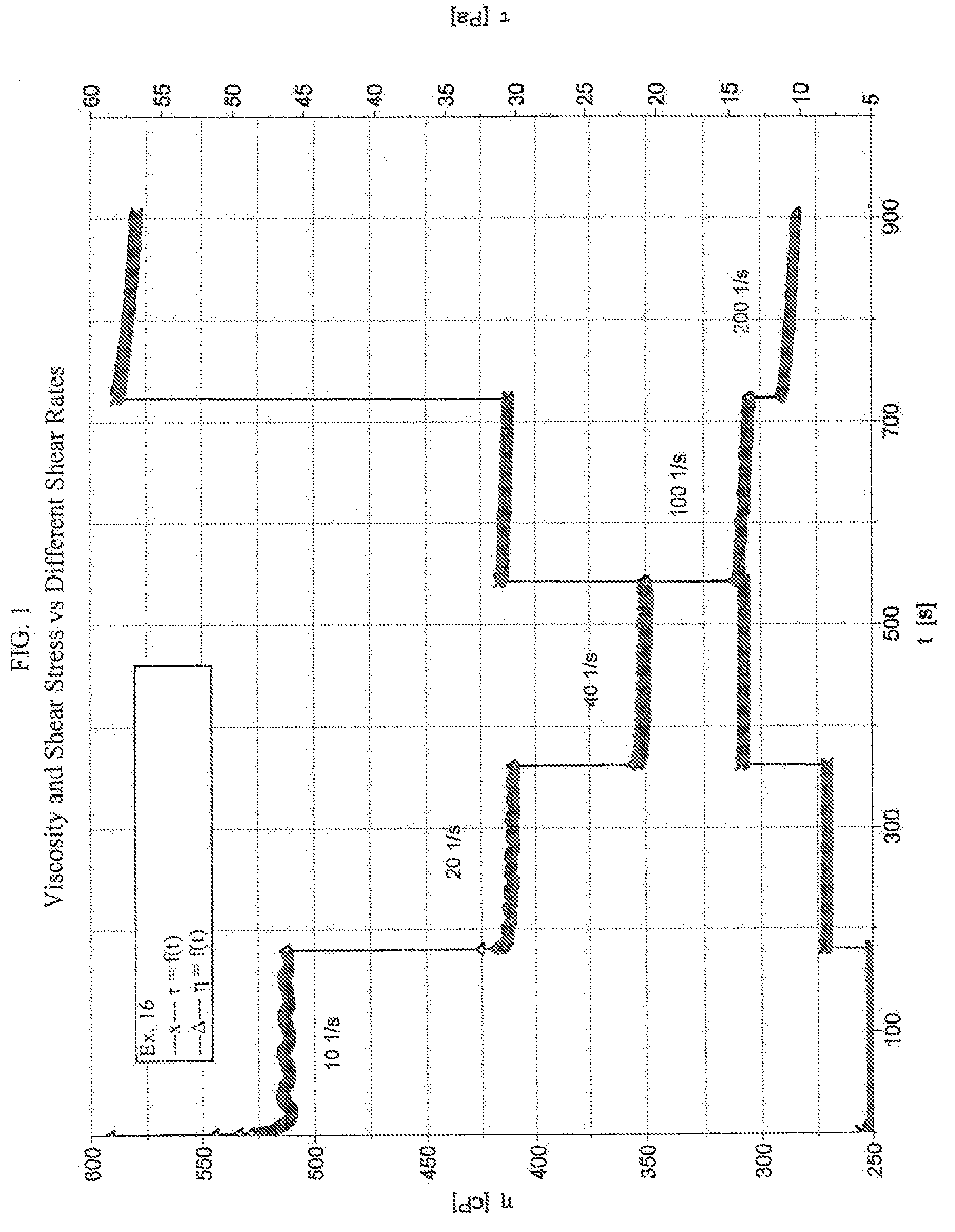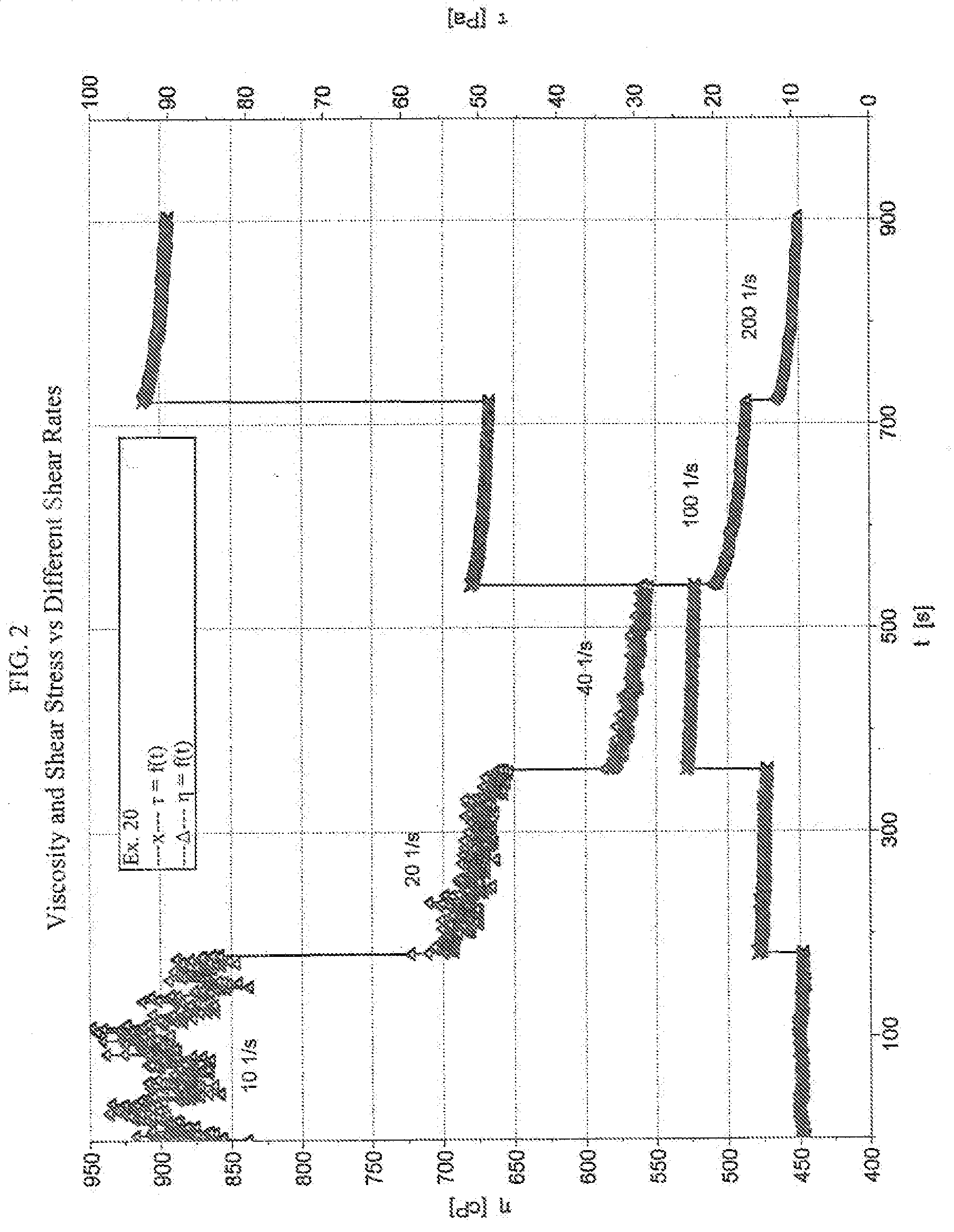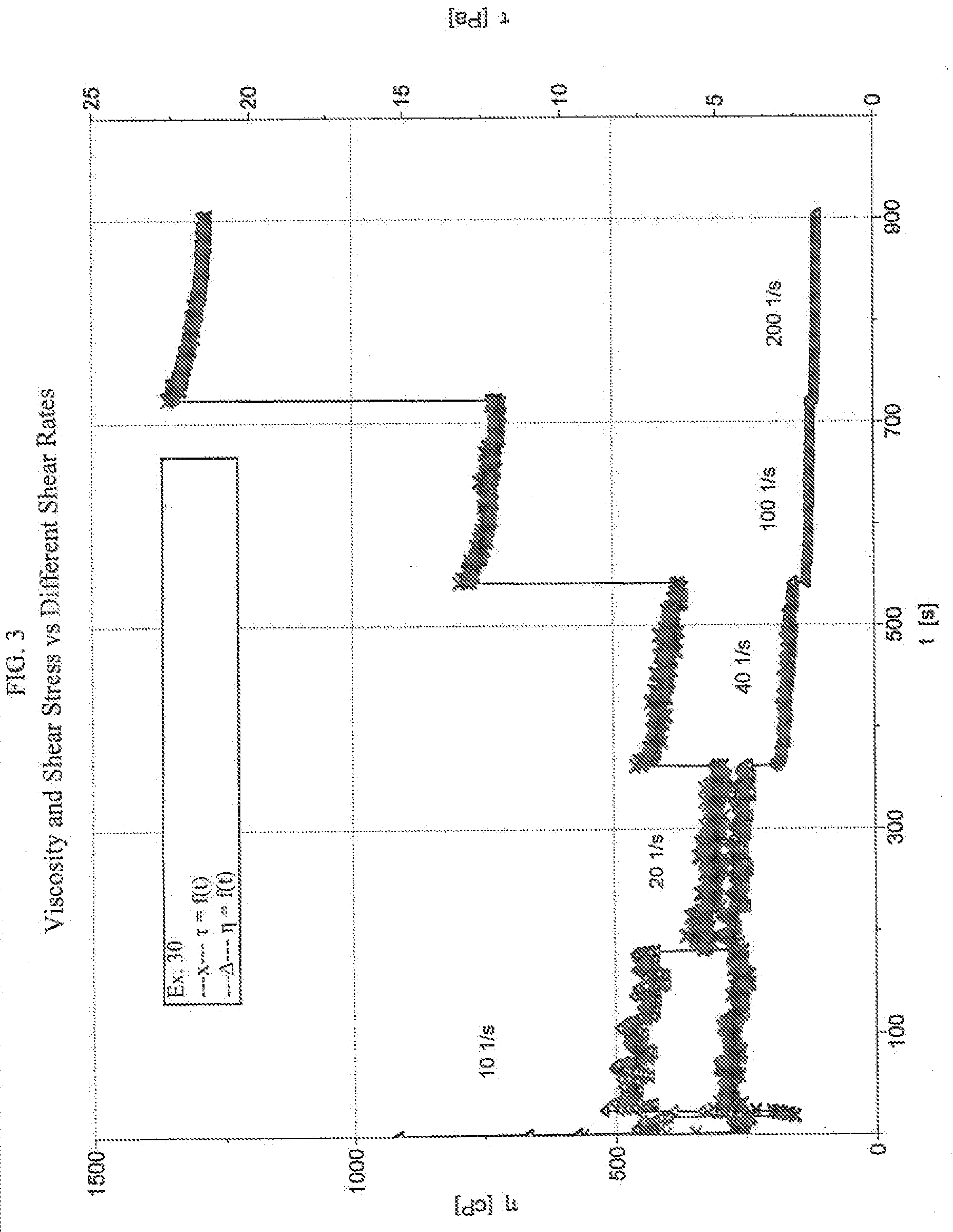Ultraviolet curable coating
- Summary
- Abstract
- Description
- Claims
- Application Information
AI Technical Summary
Benefits of technology
Problems solved by technology
Method used
Image
Examples
examples
[0038]The invention is further described by way of the following examples, which are presented by way of illustration, not of limitation.
examples 1 through 17
[0039]Examples 1 through 17 were prepared according to the formulations set forth in Tables 1 and 2 and represent low gloss formulations in accordance with exemplary embodiments, in which the amounts shown under each example number are in grams. In each case, the experimental procedure was conducted by first mixing the resin components along with any reactive diluents, amine synergists, surfactants and dispersing agents at room temperature under high speed agitation. Thereafter, the photoinitiator was slowly added with high speed agitation until all initiator was dissolved. The photoinitiator was added at room temperature or, in some cases, at 45 degrees Celsius followed by returning to room temperature. Next, the flattening, i.e. matting, agents were added, except for any flattening agents already present in a self-matting resin. The flattening agents were slowly added to the formulation during high speed agitation, followed by at least an additional 5 minutes of mixing. The formul...
examples 18 through 28
[0040]Examples 18 through 28 were prepared according to the formulations set forth in Tables 3 and 4 and represent low gloss formulations in accordance with exemplary embodiments which contain a texturizer, in which the amounts shown under each example number are in grams.
[0041]The formulations were prepared in the same way as that of Examples 1 through 17, except that the texturizer was introduced at the point at which the additional matting agents were introduced; in some cases no additional flattening agents were introduced other than those already present in the EC6360.
TABLE 3TradenameSupplierChemical TypeFunctionEx. 18Ex. 19Ex. 20Ex. 21Ex. 22EC6360EternalPolyester acrylateresin35.0035.0035.0035.0035.00DesmoluxBayerUrethane Acrylateresin015.0015.0015.0015.00XP2513Ebecryl 4883CytecUrethane Acrylateresin15.000000SR 9035SartomerEthoxylatedresin9.000000TrimethylolpropaneTriacrylateSR833SSartomerTricyclodecaneresin9.0020.0020.0020.0020.00dimethanoldiacrylateSR531SartomerCyclicresin09...
PUM
| Property | Measurement | Unit |
|---|---|---|
| Percent by mass | aaaaa | aaaaa |
| Fraction | aaaaa | aaaaa |
| Fraction | aaaaa | aaaaa |
Abstract
Description
Claims
Application Information
 Login to View More
Login to View More - R&D
- Intellectual Property
- Life Sciences
- Materials
- Tech Scout
- Unparalleled Data Quality
- Higher Quality Content
- 60% Fewer Hallucinations
Browse by: Latest US Patents, China's latest patents, Technical Efficacy Thesaurus, Application Domain, Technology Topic, Popular Technical Reports.
© 2025 PatSnap. All rights reserved.Legal|Privacy policy|Modern Slavery Act Transparency Statement|Sitemap|About US| Contact US: help@patsnap.com



